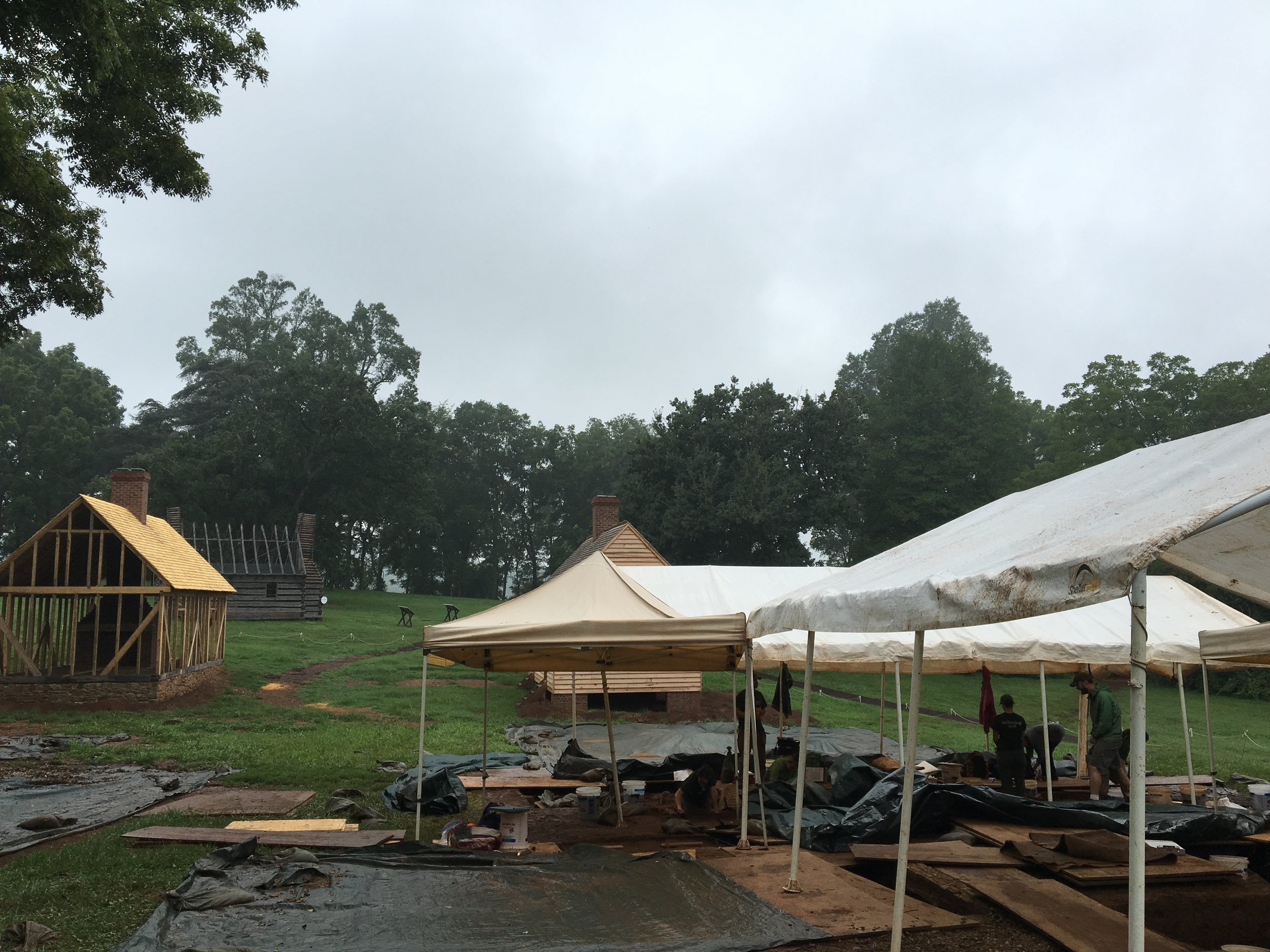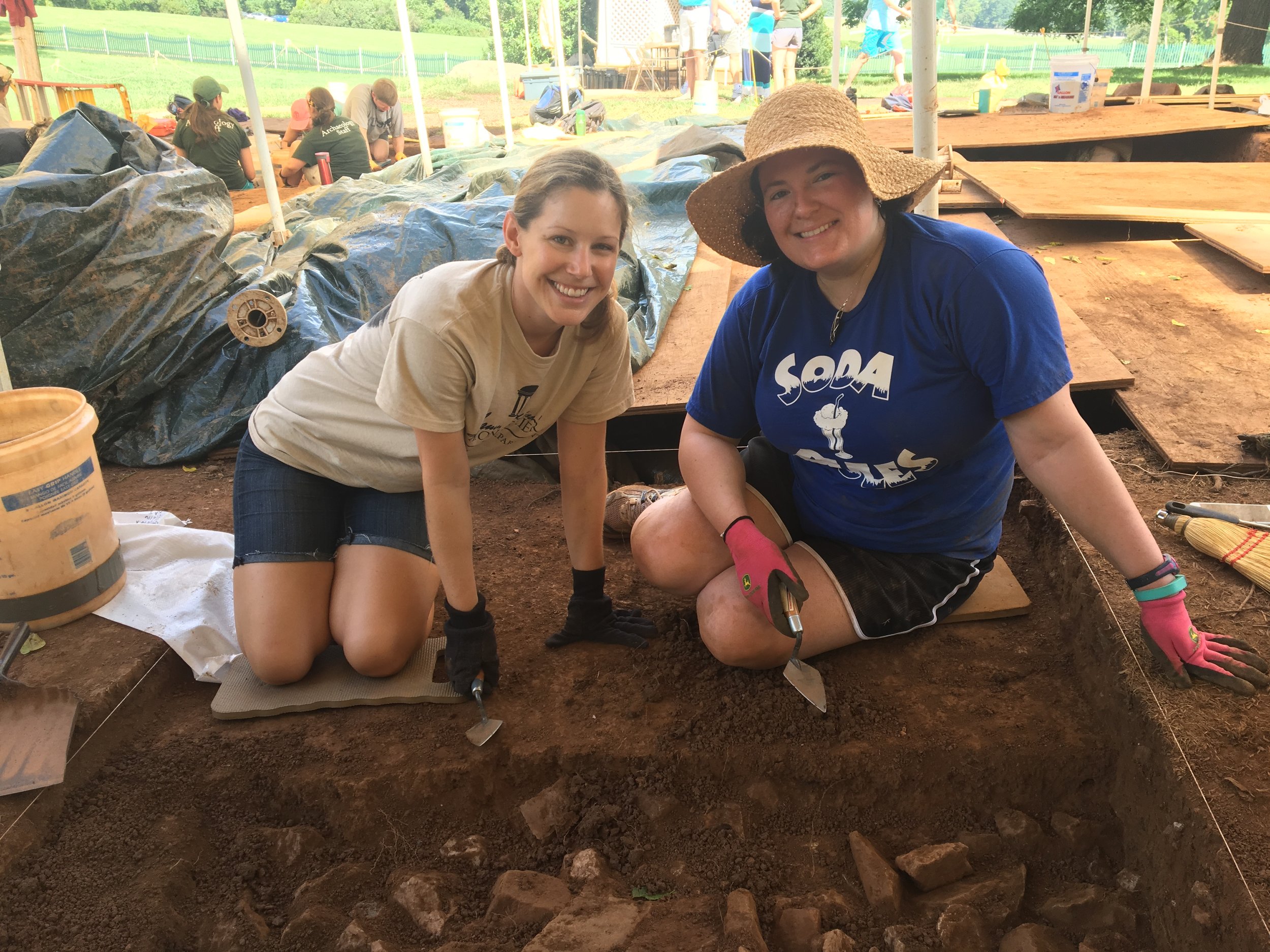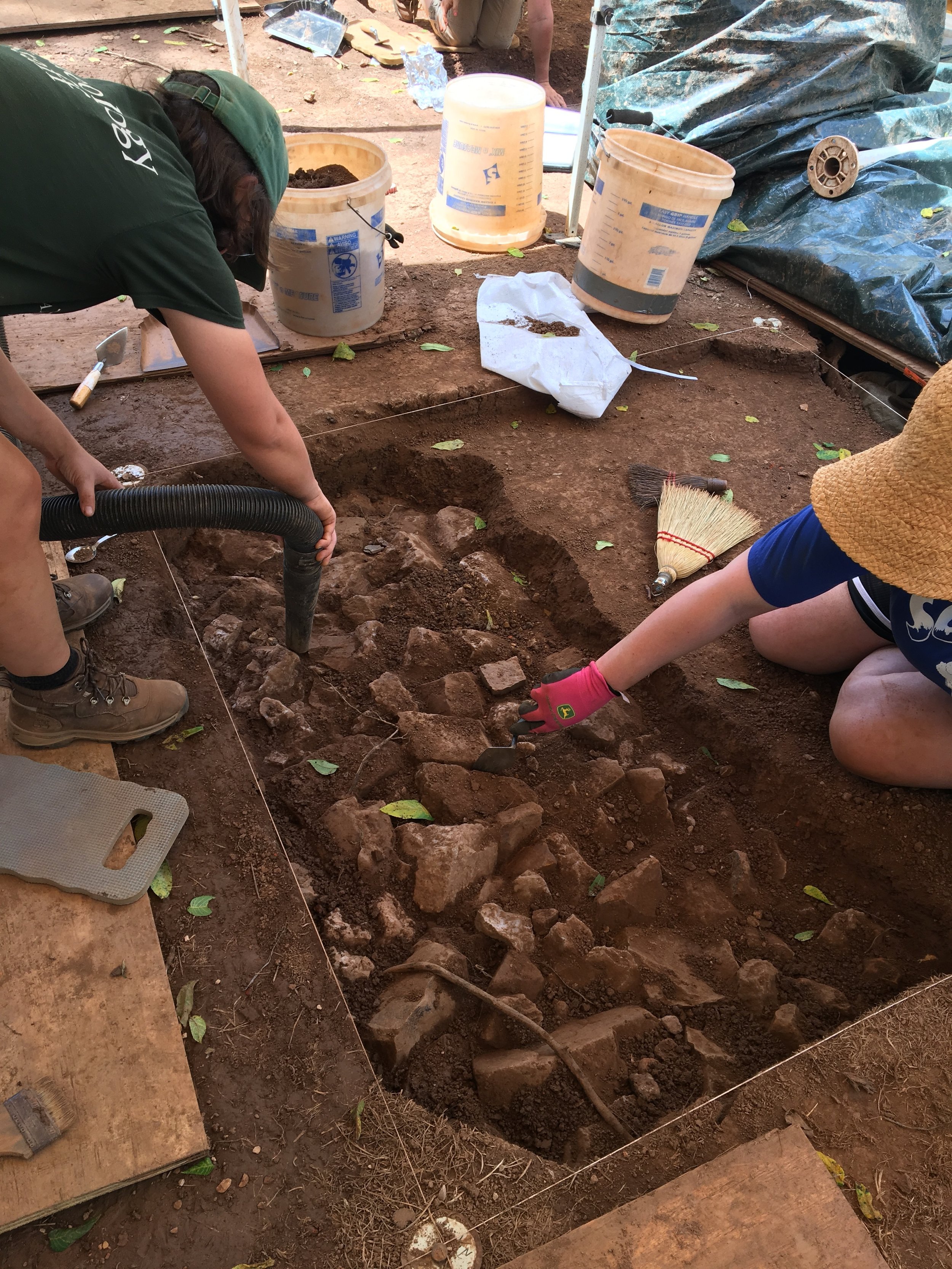Out in the field with Montpelier Senior Research Archaeologist Terry Brock and my volunteer partner Emily
This August I volunteered for a week with the archaeology team at James Madison's Montpelier in Orange, Virginia. It was a beautiful area and an especially gorgeous estate. I'd never been there, and to be honest, don't remember learning much about Madison in school, outside of the fact that he is the "father of the Constitution," so it was an especially interesting sensation to be learning a lot about him as I literally went digging around in his backyard.
I minored in cultural anthropology and have always loved anthropology, history, and archaeology, but never knew people could volunteer for digs until Chris gave me A Practical Handbook of Archaeology (and that little slice of lovely information) for my 32nd birthday. So I looked into it, found this opportunity with Montpelier, and registered.
The volunteer opportunity is part of their public archaeology program, and the goals are pretty similar to most outreach programs. It recalled to me aspects of my job at Mass Poetry--not the digging in the dirt part, but the "trying to engage people so they understand that your field is a living, breathing, awesome field" part.
Volunteers spend a week either living on the estate or in the town of Orange, and spend full work days out in the field or in the lab with the archaeology team--a group of some of the kindest, smartest, most passionate people, who were all so patient with the volunteers and welcoming of our millions of questions--my most common question being, "Is this something?" when digging, screening, or sorting, with the most common answer from my field mentor Kara or the lab director Ben being, "That's a rock." (Of course a rock is a thing, but we were looking for bone, ceramic, metal, etc.) :)
I felt bad at first because Kara seemed to have to just watch me and my partner trowel fairly poorly ("We're looking a liiiitle uneven...") in her 5x5 pit and ponder the fact that she could be doing the job much faster. But then she explained to me that the public archaeology program is also part of her job--for a number of weeks, the archaeologists work without volunteers there, and then for a number of weeks, they work with us, teaching us what they do and how to do it.
The South Yard & the main house (slightly warped by iPhone panorama)
What they're doing big-picture is working to bring Madison's fuller story, a fuller story of the plantation and of our nation's history, to light for visitors of the estate. They're working in the South Yard, where the domestic enslaved community lived (meaning the enslaved who did the cooking, cleaning, etc. for the Madison household), and their goal is to understand what the South Yard looked like (how were the structures laid out, what materials were used, where were the hearths, the entrances, etc.), and how it was used, so that it can be rebuilt (and retold) as accurately as possible. Basically, what visitors can't see, visitors can't consider. Reconstruction of the South Yard allows us a more truthful, accurate, and complex picture. (There is a lot to say about that side of the experience--a post for another day.)
On the daily, what the archaeology team is doing is excavating, taking the land down carefully from present day (our current grass and soil) past the "destruction era" (when new buyers of the plantation knocked down the South Yard structures) and finally landing at the soil walked by Madison's enslaved--the "occupation era." (It's in the "destruction" layer of soil that most of the artifacts are found, as the buildings weren't totally cleaned out before they were leveled.)
And to sum up quickly the way it works in the field:
- You trowel. (This is not digging--it's more like scraping, and it makes the loveliest sound.)
- Sometimes you begin to see something cool peering out of the soil. You leave it there and carefully trowel around it layer by layer until it loosens. Congrats, you've just found something cool! It goes into a special bag for the lab (after being admired and Instagrammed). :)
- With a dustpan and brush, you put all the loose soil you've troweled into buckets.
- You dump the full buckets through screens of different sizes to find any artifacts you didn't see earlier. You put them into bags for the lab.
- Repeat.
Sorting
Lab days were also very cool--I was surprised by how much I loved being in the lab. I'd divide the lab into two parts, though there are many more that as a first-timer, I didn't get into! One part is cleaning the artifacts that came in from the field, and though my fingers pruned and whimpered, I enjoyed having what felt like an intimate experience with everything that was found. Cleaning the artifacts, you spend quality time with each one, sort of waking it from its long hibernation. That was special. The other part is sorting. Out in the field, from each layer in each pit, the archaeologists scoop up a bucket of soil that doesn't get screened out there. It comes back to the lab for a special screening process. The results of each of those screenings leads to sorting, where you open up a bunch of bags--whatever made it through the screen of a certain size, and pluck out anything in there that isn't just rock, dirt, etc. Then you make new tiny bags for each thing. Basically you sort things into tiny bags and put those tiny bags into bigger bags, and it sounds insane, but I was obsessed. I kind of want to be a professional sorter, but I don't think that's a thing.
IN ALL, I learned a lot, got dirty, had an identity crisis (why didn't I become an archaeologist?!), and met some cool and inspiring people (hi Matt, hi Terry, hi Kara, hi Ally, hi Ben, hi everyone!). I'd recommend the experience to anyone interested in history or archaeology. They have different expeditions too (like metal detector work, cabin reconstruction, etc.) so probably everyone should just go check it out. :) Here's the website for more info.
Image descriptions on hover when enlarged















